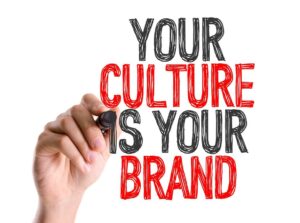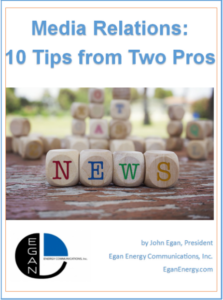
“Hey Dad, don’t freak, but I just totaled my car.”
— The first thing my son Jack said when he called to say he would be unable to visit us last year
“You walked into the party like you were walking on to a yacht.
Your hat dipped strategically below one eye
Your scarf it was apricot.”
— Opening lines from “You’re So Vain,” by Carly Simon
“We were somewhere around Barstow on the edge of the desert when the drugs began to take hold.”
— Opening sentence from Fear and Loathing in Las Vegas, by Hunter S. Thompson
“Upholstery has always been a reliable place to find loose change, after-dinner mints and paper clips. Recently, our utility searched around in upholstery and came up with a great idea.”
— Lede in Intake Magazine article, published by the Los Angeles Department of Water & Power (LADWP)
“John, it’s Hilda. I won’t be coming to work today. The cancer came back.”
— Voice mail left by my administrative assistant when I worked in a utility
These five examples may seem random. They aren’t. Don’t worry, I’ll connect them all and land the plane in due time.
One of my mentors, an editor with years of experience at the Financial Times, once told me that the first sentence of any article (shorthanded as “lede” by journalists) was like a fishhook that you inserted in the reader’s brain, then pulled to set it. Like a well-baited fishhook, a memorable lede hooked the reader. Like a hooked fish, the reader would be unable to escape your next paragraph, the following paragraph, the one after that, and so on.
“Your readers will die soon enough,” he sometimes said after reading one of my less memorable ledes. “Try not to bore them to death.”
Life Lessons About Media Relations

A significant part of my work at EEC consists of writing feature articles for energy publications, such as Public Power Magazine, Relay Magazine, California Water & Power, Transmission & Distribution World, and others. The publication date typically is weeks or months after the article is written, so you can’t start an article with something that someone said yesterday.
As a reporter, interacting with utility media relations practitioners has given me some fresh insights into the crafts of writing and media relations. I shared my first thoughts, on the first step to getting better media coverage, a while back. I followed that with a second piece on best, and worst, practices in utility media relations, again, drawing from my hands-on experiences as a reporter, who is a customer of utility media relations practitioners. More practitioner-anchored thoughts were offered in a third piece, on the need to have a good story.
This blog concerns telling your feature story well, a critical element in gaining earned media. A well-told story begins with a compelling lede.
Nothing will grab and hold the attention of a stakeholder — whether it’s a reporter, a customer, an investor, or a community leader — faster than a few well-chosen words at the start of your piece. Your goal is to hook your reader and command his or her attention for as long as it takes to finish your piece, whether they are reading a print version or scrolling through it on their phone or computer.
Communications Tip of the Month: News coverage is called “earned media” because it must be earned. It’s different than “paid media,” AKA advertising, which is bought. Gaining earned media first requires you to get a reporter interested, so she can pitch her editor. And facts alone, typically, will not grab and hold a reporter’s attention. Colorful human-interest stories will.
Colorful details that lead to questions can keep the reader reading, like the person wearing an apricot scarf in “You’re So Vain.” Was it Mick Jagger, James Taylor, Warren Beatty, or someone else? Equally effective are things that are just plain odd, such as the drug-addled recollections of Hunter S. Thompson. Finally, a touching human-interest anecdote, like the sad health news from Hilda, my administrative assistant who eventually succumbed to cancer, can connect you to your readers.
There are a lot of ways to gain and keep a reader’s attention. Facts are not one of those ways.
“Hard” News vs. “Soft” Features

I need to make a distinction between “hard” news and softer feature stories.
When you’re writing a hard news press release, such as on your utility’s earnings, its planned capital expenditures, or its acquisition of another firm, Black & White is the name of the game. Facts and data, all the way. No clever ledes about your cat, Lizzo, someone’s car, or a high school classmate.
But this post concerns humanizing your utility with feature stories placed in earned media, such as newspapers, TV, or radio. Those tend to have a softer focus.
First step: hooking a reporter. Facts alone typically won’t capture a reporter’s interest. Instead, start with color, the human angle, the unusual, the memorable. If you succeed and the reporter is still with you after the first few paragraphs, you can weave a few facts to buttress your lede.
Humanizing Your Brand

In today’s culture, driven as it is by social media, some might ask why utilities should bother trying to win favorable media coverage, particularly from “dying legacy media” like newspapers, TV, or radio.
The answer is simple, and we have made this point several times: By proactively placing stories in the media that reflect well on their utility, utility media relations representatives are engaging in strategic risk management. Sooner or later, something will go wrong at your utility. Your reputation will be sullied. The public may reconsider its trust in you.
The public’s willingness to accept and forgive depends on their view about the utility: Do I trust them? Do I like them? Do they treat me well? If the answer is “yes,” half of your job is done. Thank your predecessors. We all stand on the shoulders of those who came before us.
Utilities that enjoy a favorable public impression get extra grace from their stakeholders, which shortens their recovery time after a misstep. Like Noah and his ark, they took steps to prepare for an uncertain future before that future manifested itself. And as former president John Kennedy once said, “The best time to repair a roof is when the sun is shining.”
On the other hand, if the public feels your service has been sketchy or your price is too high, your utility’s road to recovery will be long and bumpy. For that, too, you can thank your predecessors.
Photo credits: iStock
___________________________________________________________________________________
SOME HELPFUL TIPS ON
MEDIA RELATIONS FROM EEC
Should we engage in “spin” to tell our story?
Are headlines important in our press pieces?
Why do the human resource and legal departments have anything to do with media relations?
What is a “beat” system?
Check out the answers to these questions and more here!

